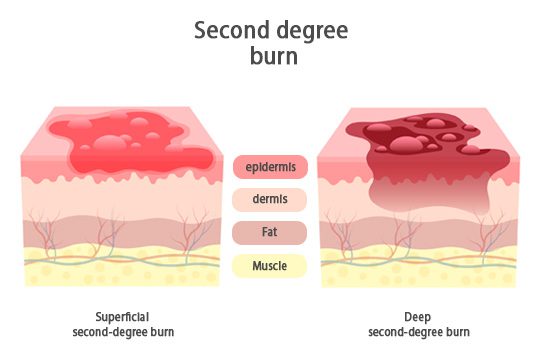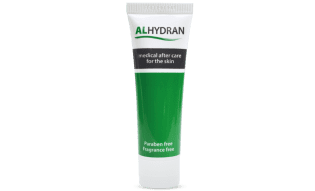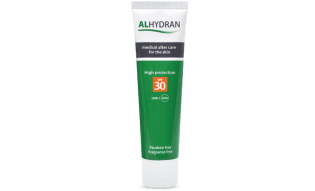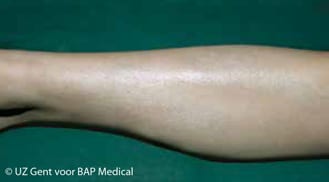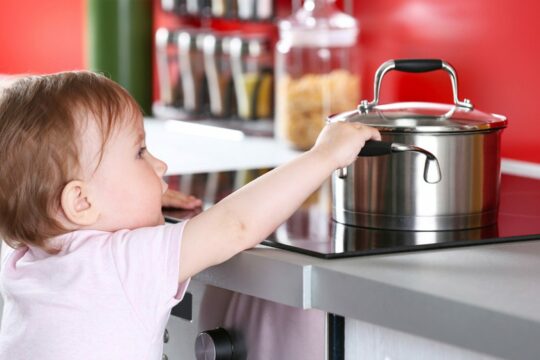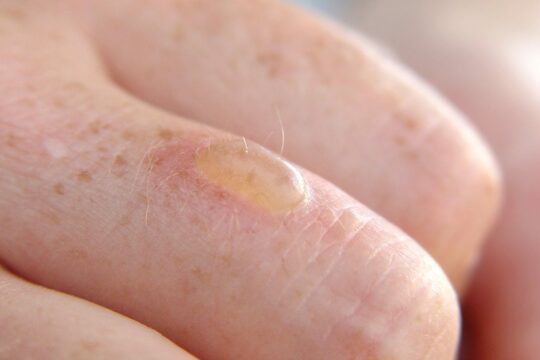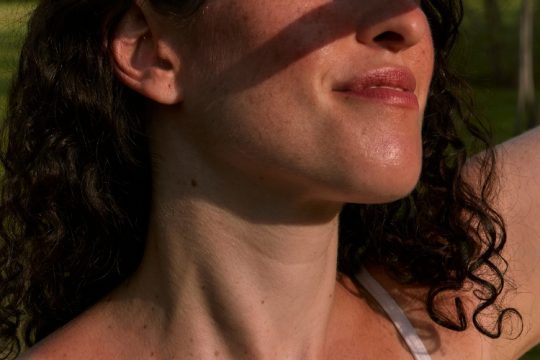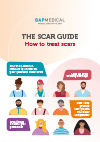First aid for a 2nd degree burn
Quick and correct first aid can minimise the damage to your skin and reduce the risk of complications. These first aid recommendations align with trusted healthcare sources, including the NHS. For detailed official advice, visit the NHS website.
For the best healing result, follow these steps:
Cooling with water
For the best result, cool the burn as quickly as possible:
- Act immediately
Cool the burn for at least 10 minutes under lukewarm running water.
- Avoid very cold water
Do not use ice-cold water or ice, as this may cause hypothermia or further skin damage.
- Let water flow gently
Allow the water to run over the wound, not directly onto it, to avoid additional irritation.
Do not pierce blisters
Burn blisters are the body’s natural way of protecting damaged skin. The clear fluid inside keeps the wound moist and shields it against infection. Expert advice varies on how to treat blisters, but one thing is clear: never burst them yourself. Instead, follow these steps for the best healing result:
- Leave blisters intact. Do not puncture or squeeze them yourself. An intact blister forms a natural barrier against bacteria. In some hospital settings, a doctor may choose to deroof the blister – this means removing the top layer of skin under sterile conditions. This should only be done by a medical professional.
- Keep the area clean. Gently wash around the blister with lukewarm water and mild, fragrance-free soap. Pat the skin dry with a clean towel.
- Cover if needed. If the blister is in an area that rubs against clothing, protect it with a sterile dressing. This reduces the risk of accidental rupture.
- If a blister breaks do not peel it off. Carefully trim loose skin with sterile scissors and cover the area with a clean dressing. Apply gentle pressure to hold the dressing in place but avoid anything too tight.
- Watch for signs of infection. Increasing redness, swelling, pus or bad smell around the blister are warning signs. If you notice these, contact your GP or another medical professional.
Avoid Sunlight
Burn wounds and burn scars are extremely vulnerable and highly sensitive to UV radiation. The skin in these areas is thinner, lacks full pigmentation, and doesn’t offer the same natural protection as healthy skin. Even mild sun exposure can trigger inflammation, slow down the healing process, and lead to permanent pigmentation changes such as darkening or discoloration of the scar (hyperpigmentation). Cover the area and avoid sunlight for at least two years after the burn.
Scar tissue continues to develop and remodel for up to two years. Throughout this period, the skin remains vulnerable. To support healing and minimise the risk of thickened or discoloured scars, it’s essential to protect the area from UV exposure every day, even when it’s cloudy.
Tip: Use a medical cream with sun protection, such as ALHYDRAN SPF 30, which combines powerful hydration with broad-spectrum UVA and UVB protection. Apply it daily to support scar healing and shield sensitive skin from harmful rays.
Managing pain
Pain from 2nd degree burns can be intense. Over-the-counter medication such as paracetamol or ibuprofen can help ease discomfort.
Elevating the burned area can also reduce swelling and pressure-related pain.
When to seek medical help
Small burns can often be treated at home, but you should seek medical help if:
- The burn is larger than 8 cm (about 3 inches).
- The burn is on the face, hands, feet, genitals, or over a major joint.
- Signs of infection appear (increasing pain, pus, spreading redness, fever).
- The person is a child under 5, an older adult, or has a weakened immune system.
